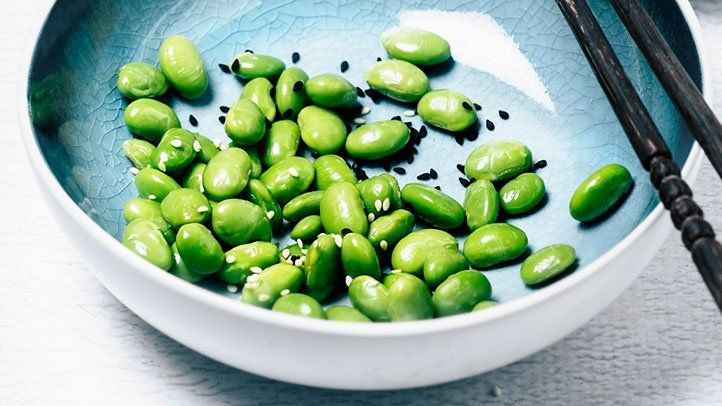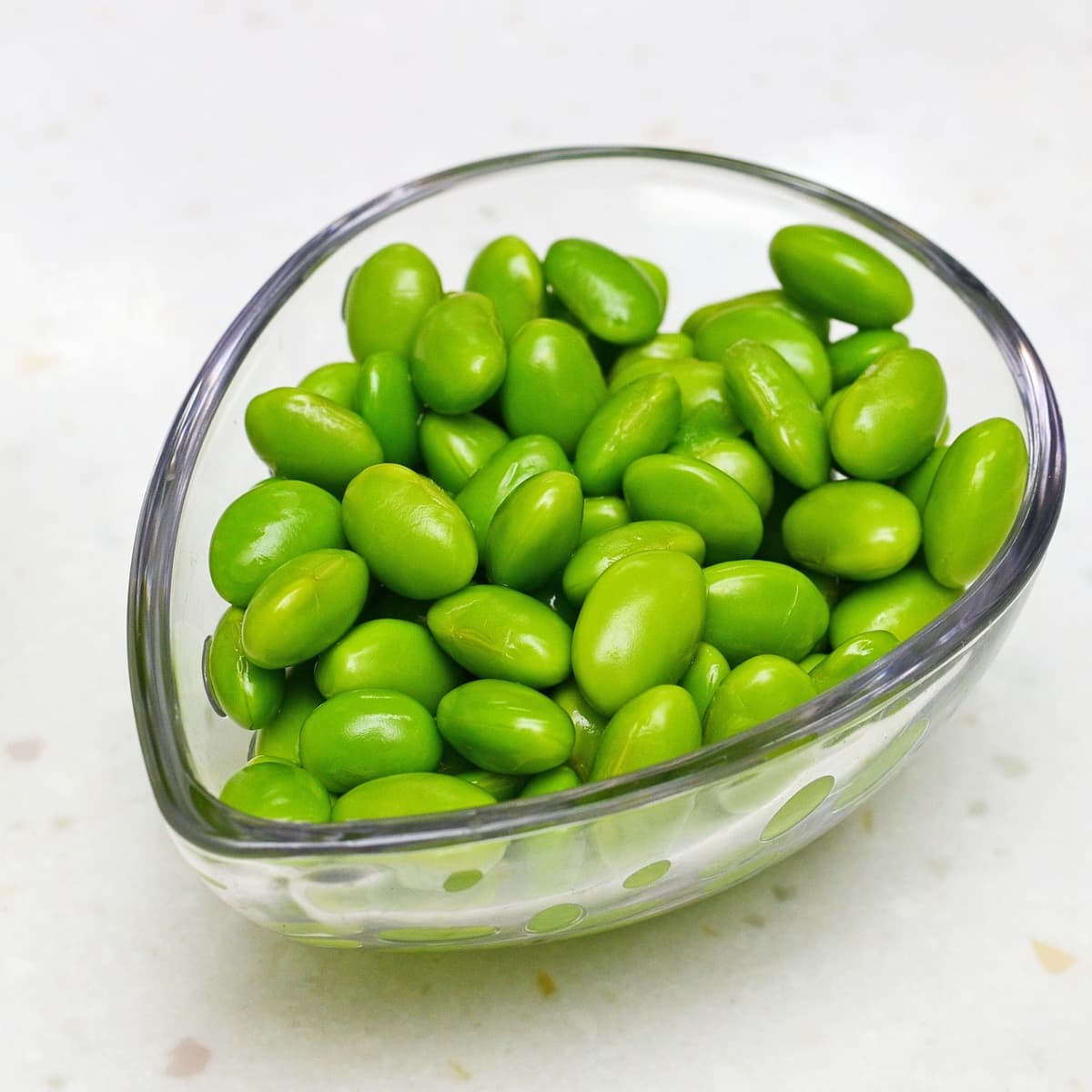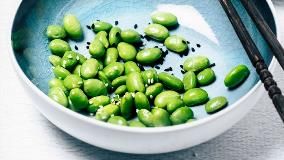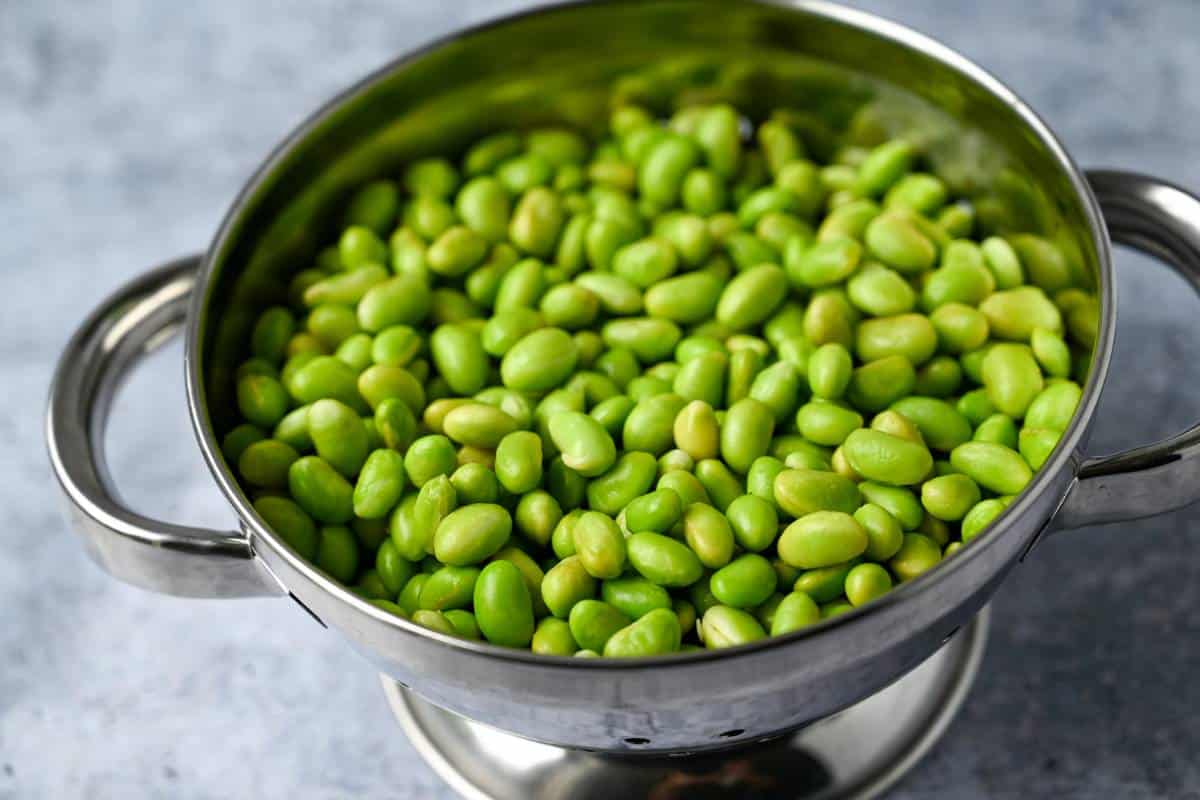Introduction To Soybeans And Different Varieties

Soybeans are a type of legume that have been cultivated for centuries and are a staple food in many cuisines around the world. They are an excellent source of protein, fiber, and essential nutrients. Soybeans come in different varieties, each with its own unique characteristics and uses. Apart from Edamame and Mukimame, other popular soybean varieties include tofu, soy milk, soy sauce, and tempeh. These versatile legumes can be cooked, processed, and incorporated into a wide range of dishes, making them a valuable ingredient in both traditional and modern cooking.
Overview Of Edamame And Mukimame Soybeans
Edamame and Mukimame are two popular varieties of soybeans that offer unique flavors and textures. Edamame, which translates to “beans on branches,” refers to immature soybeans that are harvested when they are still green. They have a bright green color and a slightly sweet flavor. On the other hand, Mukimame are mature soybeans that have been shelled, revealing their creamy texture and nutty taste. Both varieties are rich in protein, fiber, and essential nutrients. Their versatility makes them a great addition to soups, salads, stir-fries, and as a standalone snack.
Key Differences Between Edamame And Mukimame
Edamame and Mukimame may both be soybeans, but they have distinct characteristics that set them apart. The main difference lies in their stage of maturity and preparation. Edamame is harvested when the soybeans are still green and immature, while Mukimame is made from mature soybeans that have been shelled. This results in differences in flavor and texture. Edamame has a slightly sweet taste and a crunchy texture, whereas Mukimame has a creamy texture and a nutty flavor. Additionally, Edamame is typically served steamed or boiled in the pod, while Mukimame is often used in recipes after being shelled.
Edamame: Nutritional Benefits And Culinary Uses

Edamame is not only delicious but also packed with nutritional benefits. These young, green soybeans are rich in protein, fiber, and essential vitamins and minerals. They are a great source of plant-based protein, making them an excellent choice for vegetarians and vegans. Edamame is also low in fat and cholesterol, making it a heart-healthy snack.
In terms of culinary uses, edamame can be enjoyed in a variety of ways. It can be boiled, steamed, or even roasted for a crispy texture. Edamame can be added to salads, stir-fries, soups, or enjoyed on its own as a tasty snack. Its mild, slightly sweet flavor pairs well with a variety of seasonings and sauces, making it a versatile ingredient in many dishes.
So go ahead and add some edamame to your diet to reap its nutritional benefits and enjoy its culinary versatility.
Health Benefits Of Edamame
Edamame offers a range of health benefits that make it a valuable addition to any diet. Packed with plant-based protein, it provides essential amino acids for muscle growth and repair. The high fiber content aids in digestion and promotes a healthy gut. Edamame is also a good source of vitamins and minerals, including folate, vitamin K, and iron. These nutrients contribute to bone health, blood clotting, and the production of red blood cells. Additionally, the antioxidants in edamame help protect against cell damage and lower the risk of chronic diseases. By incorporating edamame into your meals, you can boost your overall health and well-being.
Various Ways To Incorporate Edamame Into Your Diet
There are numerous delicious and creative ways to incorporate Edamame into your diet. You can enjoy them as a standalone snack by simply boiling or steaming them and adding a sprinkle of sea salt. Edamame also makes a great addition to salads, stir-fries, and soups, adding a burst of color, texture, and protein. You can even blend cooked Edamame with herbs and spices to make a flavorful dip or spread. Another option is to use Edamame as a substitute for other proteins in recipes, such as in pasta dishes or veggie burgers. The versatility of Edamame allows you to experiment and create a variety of nutritious and delicious meals.
Mukimame: Nutritional Value And Versatility

Mukimame, like Edamame, is a highly nutritious and versatile soybean variety. It is packed with essential nutrients, including protein, fiber, and vitamins. With its rich protein content, Mukimame is a great option for vegetarians and vegans to meet their dietary needs. Additionally, the high fiber content aids in digestion and promotes feelings of fullness. The versatility of Mukimame shines through in its ability to be incorporated into a wide range of recipes, including salads, stir-fries, and grain bowls. Whether enjoyed on its own or in a dish, Mukimame provides a nutritious and delicious addition to any meal.
Nutritional Content Of Mukimame
Mukimame is a highly nutritious soybean variety, packed with essential nutrients. It is a rich source of protein, providing all the essential amino acids needed by the body. Additionally, Mukimame is high in fiber, which aids in digestion and helps maintain a healthy digestive system. This soybean variety also contains vitamins such as vitamin K, vitamin C, and B vitamins. With its combination of protein, fiber, and vitamins, Mukimame is a great addition to a balanced diet, promoting overall health and well-being.
Different Recipes And Dishes Featuring Mukimame
Mukimame can be incorporated into numerous recipes and dishes, adding a nutritious and flavorful twist. Some popular options include adding Mukimame to salads, stir-fries, and grain bowls for an extra protein boost. It can also be mashed and used as a spread on sandwiches or mixed into dips and spreads. Another delicious way to enjoy Mukimame is by roasting it with seasonings like garlic, paprika, or soy sauce for a crispy and savory snack. Its versatility makes it easy to experiment with and enjoy in a variety of culinary creations.
Cooking And Preparing Edamame

Edamame is a versatile and easy-to-prepare soybean variety that can be enjoyed as a nutritious snack or incorporated into various dishes. To cook edamame, simply boil the pods in salted water for about 5-7 minutes until they are tender. Drain the pods and sprinkle them with a pinch of sea salt for added flavor. Alternatively, you can steam edamame pods for a lighter and more delicate texture. Once cooked, the pods can be served hot or cold. To enhance the flavor, consider adding a drizzle of soy sauce or a sprinkle of sesame seeds. Edamame can also be shelled and used in recipes like salads, stir-fries, and pasta dishes. Its bright green color and vibrant flavor make it a popular ingredient in many cuisines around the world.
Methods Of Cooking And Serving Edamame
Edamame can be cooked using two main methods: boiling and steaming. To boil edamame, simply add the pods to a pot of salted boiling water and cook for 5-7 minutes until they are tender. Drain the pods and sprinkle them with a pinch of sea salt for added flavor. Alternatively, you can steam edamame by placing the pods in a steamer basket over boiling water for about 5-7 minutes. Once cooked, the pods can be served hot or cold. They are often enjoyed as a snack or appetizer, but can also be added to salads, stir-fries, or pasta dishes for a nutritious boost.
Tips For Preparing Edamame For Optimal Taste
To enhance the flavor of Edamame, there are a few tips to keep in mind. First, make sure to add enough salt to the boiling water when cooking the pods, as this will help bring out the natural sweetness of the beans. Additionally, you can experiment with different seasonings such as garlic powder, chili flakes, or sesame oil for added depth of flavor. Lastly, don’t overcook the Edamame as it can become mushy, so aim for a tender yet firm texture. Enjoy these tasty soybean snacks with your preferred seasonings for a delicious and nutritious treat.
Cooking And Preparing Mukimame

Cooking and preparing Mukimame is quite simple and convenient. These soybeans are often sold precooked and frozen, making them a quick and easy option for meals. To cook frozen Mukimame, simply bring a pot of water to a boil and add the beans. Boil them for about 3-5 minutes until they are tender but still firm. Once cooked, drain the beans and rinse them with cold water to stop the cooking process. Mukimame can be enjoyed as a standalone snack, added to salads, stir-fries, soups, or even blended into dips and spreads. Get creative and experiment with different recipes to fully enjoy the versatility of Mukimame in your meals.
Cooking Techniques For Mukimame
To cook Mukimame, bring a pot of water to a boil and add the frozen beans. Boil them for about 3-5 minutes until they are tender but still firm. Once cooked, drain the beans and rinse them with cold water to stop the cooking process. This simple cooking method helps preserve the vibrant green color and firm texture of the beans. Mukimame can be enjoyed as a standalone snack or used in various recipes such as salads, stir-fries, soups, or even blended into dips and spreads. Get creative and explore different cooking techniques to fully enjoy the versatility of Mukimame in your meals.
Creative Ways To Include Mukimame In Your Meals
There are endless creative ways to incorporate Mukimame into your meals and make the most of its delicious flavor and nutritional value. One idea is to add Mukimame to stir-fries for an extra pop of color and texture. You can also toss them into salads for a protein-rich addition. Another option is to blend cooked Mukimame into a smooth and creamy dip or spread, perfect for enjoying with crackers or fresh vegetables. Additionally, you can use Mukimame as a topping for grain bowls or as a filling in wraps or sandwiches. The versatility of Mukimame allows you to experiment and create unique and flavorful dishes.
Conclusion

In conclusion, understanding the differences between Edamame and Mukimame can help you choose the right soybean variety for your needs. Edamame offers a rich nutritional profile and is commonly used in Asian cuisines, while Mukimame provides versatility and can be incorporated into various dishes. Both varieties are delicious and provide numerous health benefits. Whether you prefer the traditional Edamame or the unique texture of Mukimame, adding soybeans to your diet is a great way to enhance your meals with protein and nutrients. So, go ahead and enjoy the goodness of soybeans in your cooking adventures.
Summary Of The Differences Between Edamame And Mukimame
Edamame and Mukimame are two varieties of soybeans with distinct characteristics. Edamame is harvested earlier, while Mukimame is allowed to mature longer. Edamame is typically boiled or steamed and consumed as a snack or added to various dishes. On the other hand, Mukimame is often shelled before cooking and can be used in a variety of recipes, including salads, stir-fries, and soups. Additionally, Mukimame offers a unique texture and nutty flavor compared to Edamame. Understanding these differences can help individuals choose the soybean variety that best suits their culinary needs.
Final Thoughts On Choosing The Right Soybean Variety For Your Needs
When it comes to choosing the right soybean variety for your needs, it ultimately depends on your preferences and culinary goals. Edamame and Mukimame offer distinct flavors and textures, making them suitable for different dishes. If you enjoy snacking on young, tender soybeans, Edamame is the way to go. On the other hand, if you prefer a nuttier flavor and a more mature soybean, Mukimame is the better option. Consider the cooking methods and recipes you plan to use, and experiment with both varieties to find which one suits your taste buds and dietary requirements.
FAQ About Edamame Vs Mukimame: Understanding Soybean Varieties
Q: What is the difference between edamame and mukimame?
A: Edamame and mukimame are both types of soybeans. The main difference lies in their processing methods. Edamame is harvested when the beans are still green and soft, while mukimame is matured and allowed to dry before processing.
Q: How do the taste and texture of edamame and mukimame differ?
A: Edamame is known for its tender texture and slightly sweet, nutty flavor. On the other hand, mukimame has a firmer texture and a more earthy taste due to its matured state.
Q: Are there any nutritional differences between edamame and mukimame?
A: Both edamame and mukimame are rich sources of plant-based protein, fiber, and essential nutrients like iron and calcium. However, since mukimame is more mature, it may have slightly lower levels of certain vitamins compared to edamame.
Q: How can edamame and mukimame be prepared for consumption?
A: Edamame is often boiled or steamed and served as a snack or appetizer, sometimes with added seasonings. Mukimame, being drier, is commonly used in soups, stews, or salads after rehydration by soaking in water.
Q: Are there any culinary differences in using edamame versus mukimame in recipes?
A: Edamame’s tender texture makes it ideal for eating on its own or incorporating into dishes like stir-fries and sushi. Mukimame’s firmer texture holds up well in cooked dishes and adds a hearty element to recipes like casseroles and grain bowls.
Q: Can edamame and mukimame be used interchangeably in recipes?
A: While both types of soybeans are versatile, their different textures may affect the final dish. It’s best to use edamame in recipes where a softer texture is desired, and mukimame in recipes that require a firmer bite or longer cooking times.
Q: Where can one typically find edamame and mukimame in the grocery store?
A: Edamame is often available in the frozen foods section, either shelled or in pods. Mukimame, being dried, is usually found in the dry goods or canned vegetables aisle.

Lenoir’s Bistro & Bakery, a charming and chic cafe, has been delighting patrons with an array of delectable delights since its inception. From mouthwatering breakfast bites to succulent burgers and sandwiches and a tempting selection of pasta, sides, and desserts, Lenoir’s Bistro & Bakery is the go-to destination for food enthusiasts seeking a delightful dining experience. Founded by a passionate culinary team with a vision to create a welcoming and stylish eatery, Lenoir’s Bistro & Bakery has seamlessly blended the art of baking with the craft of preparing savory dishes. The result is a menu that caters to diverse tastes and preferences, offering something to satisfy every craving.